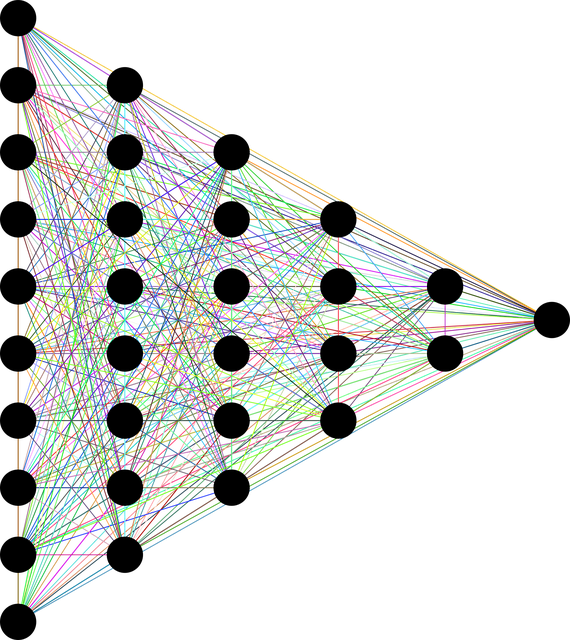Top 11 Interview Questions About Transformer Networks
This article was published as a part of the Data Science Blogathon.
Introduction

Imagine you’re a member of an elite team of experts tasked with understanding and communicating with a group of alien robots. These robots have landed on Earth and are causing destruction and chaos, and it’s up to you to fathom their motivations and find a way to resolve the situation peacefully.
Enter Optimus, the modern transformer that has the ability to analyze and understand the language and behavior of different alien species. With its up-to-date language processing and analysis capabilities, Optimus can interpret the alien robots’ communication and behavior, providing valuable insights into their motivations and goals.
Thanks to the help of Optimus, you and your team successfully negotiated a peace treaty with the alien robots, avoiding a destructive war and saving the day. Reflecting on the mission, you realize that without the help of the transformer, your team may not have been able to communicate with the alien robots and find a peaceful resolution. Transformers like Optimus enable us to bridge the communication gap between different species and promote understanding and cooperation. Who knows what other exciting and challenging missions lie ahead for you and your team with the help of these modern deep-learning algorithms?
Here is what we’ll learn by reading this blog thoroughly:
- A common understanding of what transformers are and how they work
- Knowledge of the many applications of transformers, including natural language processing and translation
- An understanding of the key advantages and limitations of transformer
- Tips and best practices for training and optimizing transformer
- Insights into the common challenges in the field of transformer
- Detailed answers to frequently asked questions on transformer architecture and design, performance, and evaluation.
Overall, by reading this blog, we will gain a comprehensive understanding of transformers and their role in the field of deep learning. We will be equipped with the knowledge and ability to use transformers effectively in many applications and be able to make well-educated decisions about when and how to use them.
How do Transformers Work?
Transformers are a type of deep learning algorithm that is especially apt for NLP tasks like language translation, language generation, and language understanding. They are able to process input sequences of variable length and capture long-range dependencies, making them effective at understanding and working with natural language.
At a high level, transformers work by using multiple layers of self-attention and feed-forward layers to process input sequences and generate output sequences. The self-attention layers allow the network to attend to different parts of the input sequence and weigh their importance, while the feed-forward layers allow the network to learn complex relationships between the input and output sequences.
For example, in our earlier example of the transformer named “Optimus,” the network might use its self-attention layers to weigh the importance of different words and phrases in the alien robots’ communication and use its feed-forward layers to learn the relationships between these words and phrases and the robots’ motivations and goals.
Overall, transformers are powerful and flexible deep learning algorithms that can be applied to different natural language processing tasks. They can learn complex relationships and patterns in data and can provide valuable insights and solutions in a variety of contexts.
Applications of Transformers

Here are some interesting applications of transformers:
- Natural language processing: Transformers are widely used for language translation, generation, and understanding. They are able to process input sequences of variable length and capture long-range dependencies, making them effective at understanding and working with natural language.
- Text summarization: Transformers can be used to generate concise and coherent summaries of long texts, like news articles or research papers. This can be helpful for quickly extracting crux information from a large amount of text.
- Image and video captioning: Transformers can be used to generate descriptive captions for images and videos, allowing them to be more easily searched and understood. This can be useful for tasks like image and video tagging, or for people with visual impairments.
- Speech recognition: Transformers can be used to understand and transcribe spoken language, allowing users to control devices or access information using their voice.
- Chatbots and virtual assistants: Transformers can be used to build intelligent chatbots and virtual assistants that can understand and respond to natural language queries and commands.
- Recommendation systems: Transformers can be used to build recommendation systems that can suggest products, articles, or other content based on a user’s interests and past behavior.
- Generation of synthetic data: Transformers can be used to produce artificial data that is hard to distinguish from real data, using techniques like generative adversarial networks (GANs). This can be useful for tasks like data augmentation or privacy-preserving data generation.
Q1. What are the Powers of Transformers?
Some powers of transformers include:
- Efficient processing of input sequences: Transformers are able to process input sequences of variable length and capture long-range dependencies, which makes them effective at understanding and working with natural language.
- Good performance on a variety of tasks: Transformers have achieved state-of-the-art performance on different natural language processing tasks, including language translation, language generation, and language understanding.
- Highly parallelizable: Transformers can be efficiently trained on multiple GPUs, which allows for faster training times and the ability to handle large datasets.
- Easy to implement: Transformers are relatively simple to implement, especially when compared to other types of deep learning algorithms like recurrent neural networks (RNNs).
Q2. What are Some Limitations of Transformers?
Some limitations of transformers include the following:
- Dependence on large amounts of data: Transformers mainly need large amounts of data to achieve good performance, which can be a challenge in cases where data is scarce or difficult to get.
- Sensitivity to initialization: Transformers can be sensitive to the starting values of their weights and biases, which can affect their final performance.
- Difficult to interpret: Transformers are black-box models, so it can be difficult to understand how they make their predictions or decisions. This can make it challenging to debug or explain their behavior.
- Limited applicability to certain tasks: Transformers are primarily designed for natural language processing tasks and may not give good output on other types of tasks like computer vision or reinforcement learning.
Q3. What is a Transformer, and What is Its Architecture? How Does it Differ From Traditional Neural Networks?

A transformer is a type of neural network architecture introduced in the paper “Attention Is All You Need” by Vaswani et al. in 2017. It is based on self-attention, which allows the network to process input sequences in a parallel fashion rather than using recurrent connections, as in traditional neural networks. Transformers have been shown to be very effective in tasks like machine translation, language modeling, and language generation. The transformer architecture consists of an encoder and a decoder, composed of multiple layers of self-attention and feedforward neural network layers. The encoder processes the input sequence and generates a set of contextual representations, which are then passed to the decoder to generate the output sequence. The self-attention layers allow the network to consider the relationships between all pairs of input elements at each layer rather than using recurrent connections as in traditional neural networks.
Q4. How is a Transformer Trained?
A transformer is trained using the same general principles as other neural networks. The training process involves providing the network with a large dataset of input-output pairs and using an optimization algorithm to adjust the network’s weights and biases to minimize the error between the predicted output and the true output. The optimization algorithm is typically some variant of stochastic gradient descent (SGD), and the error function used is typically the mean squared error (MSE) or cross-entropy loss.
Q5. Can you Explain the Concept of Self-attention in Transformers?
In transformers, self-attention is used to calculate the importance of each input element in relation to the others and to weigh the contributions of each element to the output. This is done by first projecting the input elements onto a higher-dimensional space using a set of learnable weights, then calculating the projected elements’ dot product. The dot product is then transformed using a softmax function to produce weights that reflect each input element’s importance. The weighted sum of the input elements is then used to compute the output.
Q6. What Are Some Common Challenges in Training and Implementing Transformers, and How Can Their Performance be Improved?
Some common challenges in training and implementing transformers include long training times, overfitting, and lack of interpretability. To address these challenges, techniques like batch normalization, data parallelism, model parallelism, regularization techniques like weight decay and dropout, attention visualization, and SOTA optimization techniques like AdamW and Lookahead can be used. In terms of improving transformer performance, using a larger and more diverse dataset, tuning the hyperparameters, using pre-trained models, and implementing SOTA optimization techniques can also be effective.

Q7. How do you Decide on the Number of Layers and Attention Heads in a Transformer?
The number of layers and attention heads in a transformer can impact the model’s performance and complexity. In general, increasing the number of layers and attention heads can improve model performance, but at the cost of increased computation and the risk of overfitting. The appropriate number of layers and attention heads will depend on the specific task and dataset and may require some experimentation to determine the optimal values.
Q8. How do you Handle Input Sequences of Different Lengths in a Transformer?
Input sequences of different lengths can be handled in a transformer by using padding to ensure that all sequences have the same length. Padding is typically added to the end of shorter sequences to bring them up to the same length as the longest sequence. The transformer can then process all sequences in parallel, as the padding elements do not contribute to the output.
Q9. How do you Handle Missing/Corrupted Data and Address Overfitting in Transformers?
Techniques like imputation and data augmentation can be used to handle missing or corrupted data in a transformer. In imputation, the missing values are replaced with some estimate, like the mean or median of the available data. In data augmentation, new data points are generated based on the available data to help the model generalize better. Regularization techniques like weight decay, dropout, and early stopping can be used to address overfitting in transformers. Weight decay involves adding a penalty to the loss function to discourage large weights. At the same time, dropout involves randomly setting a portion of the weights to zero during training to prevent the model from relying too heavily on any one feature. Early stopping involves stopping the training process when the performance on the validation set starts to deteriorate to prevent the model from fitting the training set too closely.
Q10. How do you Fine-tune a Pre-trained Transformer for a Specific Task?
Fine-tuning a pre-trained transformer for a specific task involves adapting the network’s weights and biases to the new task by training the network on a labeled dataset for that task. The pre-trained model acts as a starting point, providing a set of initial weights and biases that have already been trained on a large dataset and can be fine-tuned for the new task. This can be done using the same optimization algorithms and techniques used to train traditional transformers.
Q11. How do You Determine the Appropriate Level of Capacity for a Transformer?
The appropriate capacity level for a transformer depends on the task’s complexity and the dataset’s size. A model with too low a capacity may underfit the data, while a model with too high a capacity may overfit the data. One way to determine the appropriate level of capacity is to train and evaluate multiple models with different numbers of layers and attention heads and choose the model that performs the best on the validation set.
Tips and Best Practices for Working with Transformer Networks
Here are some tips and best practices for working with transformers:
- Use large amounts of high-quality data: Transformers require large amounts of data for training, and the quality of the data can significantly impact the performance of the model. Make sure to use a sufficient amount of high-quality data to train your transformer.
- Use appropriate evaluation metrics: Different tasks and datasets require different evaluation metrics. Make sure to choose the right evaluation metric for your specific task and dataset.
- Fine-tune pre-trained models: Pre-trained transformer models can provide a good starting point and can be fine-tuned for specific tasks and datasets. This can save time and improve performance.
- Monitor training and evaluation performance: Keep track of the performance of your transformer during training and evaluation to identify any issues or areas for improvement.
- Use appropriate hyperparameters: Properly setting hyperparameters, like the learning rate and the number of layers, can significantly impact the performance of your transformer. Experiment with different values and use cross-validation to find the best hyperparameters for your specific task and dataset.
- Use regularization techniques: Regularization techniques, like dropout and weight decay, can help prevent overfitting and improve the generalization of your transformer.
- Use appropriate hardware: Transformers can be computationally intensive, so make sure to use appropriate hardware, like GPUs, to train and run your models efficiently.
- Consider using transfer learning: Transfer learning can be useful for tasks with limited data or resources. You can use pre-trained transformer models and fine-tune them for your specific task rather than training a model from scratch.
- Use multi-task learning: Multi-task learning involves training a single model to perform multiple tasks simultaneously. This can be useful for tasks that are related and can benefit from shared information.
- Stay up-to-date with the latest developments: The field of transformers is constantly evolving, with new research and developments being published regularly. Stay up-to-date with the latest advancements in the field to ensure that you are using the most effective and efficient methods.
Conclusion
Transformers are a type of deep learning algorithm that is particularly effective at natural languages processing tasks, like language translation, generation, and understanding. They work by using multiple layers of self-attention and feed-forward layers to process input sequences and generate output sequences. Transformers are powerful and flexible and can be applied to a variety of natural language processing tasks.
- Key advantages of transformers include their ability to process input sequences of variable length and capture long-range dependencies and their flexibility and power in learning complex relationships and patterns in data.
- Some limitations of transformers include their large size and computational requirements, as well as the need for large amounts of labeled data for training.
- Tips for training and optimizing transformers include selecting the appropriate model architecture, using proper preprocessing and data augmentation techniques, and using appropriate evaluation metrics.
- Common challenges in the field of transformers include the need for more efficient models, the development of robust evaluation metrics, and the integration of domain knowledge into transformer models.
Thanks for Reading!🤗
If you liked this blog, consider following me on Analytics Vidhya, Medium, GitHub, and LinkedIn.
The media shown in this article is not owned by Analytics Vidhya and is used at the Author’s discretion.









